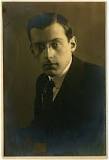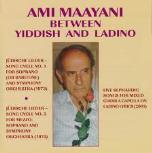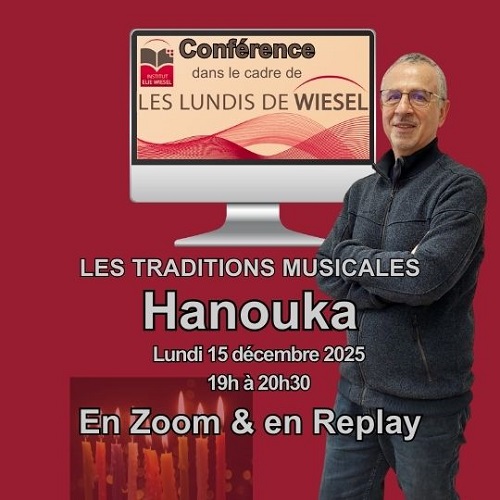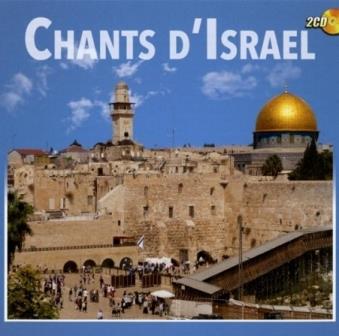
By Michèle Tauber
Just as the population of Israel is made up of many ethnic groups, its music too is plural.
Music in Israel comes from the most varied sources, from the Middle East, Central and Western Europe, North and South America, India to Africa. No continent escapes the creativity and inventiveness of Israeli musicians and composers. Classical and contemporary music sit alongside folk and religious music, not to mention the Arab music that has lived on this land for centuries.
Classical Music
Musical Groups
The first amateur orchestra in Yishuv was formed in Rishon-Le-Tsiyon in 1895 performing a repertoire that included primarily light music and arrangements of folk songs. In 1910, following the foundation of Tel Aviv, singer Selma Ruppin created the first music school in the country. In 1923, orchestra director Mark Golinkine (1875-1963) first set foot in the Palestine Opera, where the works of Verdi, Rossini and Meyerbeer, amongst others, were all performed in Hebrew translation. Due to lack of financial means, however, the opera was forced to close in 1927. The Jerusalem Music Society, founded in 1921 by the Yellin sisters created the first professional string quartet in the country and light classical music was replaced by the classical and romantic European repertoire.
On the other hand, musical composition concentrated on folk song (see below: Israeli Song). In 1924 Yaakov Weinberg composed Ha-Chalutzim, (The Pioneers), the first folk opera in Hebrew.
The most significant event of the next decade was the foundation of the philharmonic Orchestra of Palestine by Polish violinist, Bronislaw Huberman (1882-1947). This entirely new orchestra was primarily a rescue operation for Jewish musicians who had lost their jobs in the greatest orchestras of Central Europe. They gave their first concert together in Tel Aviv in December 1936, directed by Arturo Toscanini; orchestra members subsequently created chamber music groups that perpetuated the European chamber music tradition. That same year Akum, the Society for the Rights of Authors and Composers, was created. In 1948, the Palestine Orchestra became the Philharmonic Orchestra of Israel and toured in Europe and the United States. The government subsidized international events such as the International Harp Competition, the Israel Festival and the Arthur Rubinstein International Piano Competition. In 1972, thanks to the arrival of musicians from the Soviet Union, the small orchestra Kol Israel, Israeli radio, adopted the name Symphonic Orchestra of Jerusalem. The Israel Opera, founded in 1948 by American singer Addis de Philip, managed to survive for thirty years. In 1985, the New Opera of Israel reassumed its role: this time, the works were performed in their original language with Hebrew sub-titles and the Opera House reopened its doors in 1994.
In the 1990s musical life in Israel underwent a dramatic transformation with the massive arrival of nearly a million Jews from the ex-Soviet Union. This wave of immigration brought the country a large number of professional musicians, singers and music teachers whose impact was immediately felt with the creation of new symphonic orchestras, chamber music groups and small musical ensembles, and more generally by a dynamic injection of talent and musical vitality into educational settings.
Musical Creativity
The roots of contemporary classical music in Israel go back to the arrival of Central and Eastern European communities between the two world wars. The pioneers from Eastern Europe immigrated to Palestine in the 1920s along with their musical baggage, Biblical incantation, the popular melodies of the shtetl and Slavic folklore, all skillfully combined in a specifically Jewish style. With the arrival of German speaking immigrants in the 1930s, classical music returned to the fore.
Like the expressions “Jewish music” and “Jewish composer,” the terms “Israeli music” and “Israeli composer” were now associated with many definitions. In the 1930s composer Mordekhai Sandberg claimed that “Hebrew music can only be composed in the land of Israel.” On the other hand, in 1938 the journal Musica Hebraica sought to “bring together a forum in which all forms of Jewish music can be presented and discussed.” Would Israeli music thus be situated at various crossroads, between East and West, where music meets and fuses?
The First Generation of Composers
Born in Europe and emigrating to Palestine in the 1930s, the first generation of Israeli, or Hebrew, composers sought to invent a new musical language in the land of Israel. They were all. The nationalism of the era encouraged the creation of a characteristic musical language which, like Hebrew, aimed to unify and represent the young nation. Many of the works that were created were thus associated with the “Eastern Mediterranean” emerging at that point. Sources of inspiration thus included Jewish history, Biblical characters and elements linked to local geography.
Paul Ben-Chaim (Germany 1897 – Israel 1984) was a key figure in this trend. He was the first immigrant composer from Europe who sought to forge a uniquely Israeli musical style. Thanks to a long collaboration with Yeminite folk singer Bracha Zefira (1910-1990), he became familiar with the intonations of traditional Middle Eastern music, and introduced into them compositions such as The Sweet Psalmist of Israel, 1953. His music is essentially tonal and modal, although the dodecaphonic form was the basis for Vision of a Prophet (1959).
Alexandre Boskovitch (Hungary 1907 – Israel 1964) was also influenced by popular forms of expression as material for musical composition. He viewed the Israeli composer as the spokesperson of a collectivity that draws its inspiration from desert landscapes and the harsh light of the sun of the Orient; in short, a dynamic expressed simultaneously in language and music through Biblical and Modern Hebrew as well as Arabic. Even while still using Western instruments, it combines classical music with local elements, thereby creating, what it terms, a “Mediterranean music.” Some of Boskovitch’s most famous works include Semitic Suite, Shir ha-Maalot (Song of the Degrees), Concerto da camera, and Adaim (Ornaments).
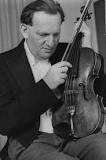
Electronic music was first introduced to Israel by Josef Tal. Born in 1910 in Posen (today in Poland), he emigrated to Palestine in 1934 and joined the Philharmonic Orchestra as soon as it was created. At Jerusalem University where he taught, he set up the first electronic music studio, where he developed a notation system for computer based musical composition. As a composer living in Israel, a heterogeneous society open to the world, Josef Tal believed that his music was Israeli ipso facto. In collaboration with poet Israel Eliraz and other librettists, he composed several operas including: Ashmedai (1969), Masada 1967 (1972), Ha-Nissayon (1975), Ha-Gan (1988).
Mordekhai Seter (Russia 1916 – Israel 1994) specialized in the integration of Yemenite rhythms and melodies into contemporary Israeli music. In 1938 he first confronted the mizrachi folklore, that is, the traditions that originated in Middle Eastern Jewish communities. Seter became totally immersed and, between 1941 and 1944, retranscribed no less than 144 sung melodies from diverse origins: Palestine, Syria, Egypt and Corfu, all of which were later published under the title Nigunim (Songs). His Shabbat Cantata, composed in 1941, is considered a cornerstone of the Israeli choral repertoire.
This presentation of the first generation of composers is far from exhaustive; we could equally well mention Chanokh Yakoby (1909-1990), Chaim Alexander (born in 1915) and Abel Ehrlich (born in 1915).
The Second Generation of Composers
The second generation of composers, made up largely of students and followers of the first generation, sought musical expression through Hebrew, with its consonants and intonations, its Jewish liturgical connection and the tradition and its place in the Eastern world. The group of composers that emerged in the 1950s included sabras for the first time. Having reached the age of majority after the War of Independence (1948-1949), they had grown up alongside the nation. Hebrew was their mother tongue and they adhered fully to the new artistic forms. But while the first generation of composers often received their musical education in France, this younger generation chose to study in the United States. The new experiences and perspectives of the young composers no doubt contributed to the gradual decline in the Eastern Mediterranean style, which they deemed overly superficial. They were in search of a deeper Orientalism, one that would employ compositional methods similar to those of the Arab maqam. [1] Their multicultural environment drew them towards highly variable musical sources, including those introduced by the new immigrants of the 1950s from Yemen, Iraq, Iran, and North Africa. During this period the modal style disappeared and there was an increasing use of dissonance.
Nevertheless, in the following decade during trips abroad by second generation composers, new Western music clearly had a strong influence on Israeli music. The causes of this influence are obvious: the initial period of nationalistic fervor was over and the younger generation was stimulated by the challenge of crossing geographic and cultural frontiers and opening themselves up to new artistic horizons in order to succeed in an actual or idealized present.
However, the Israeli-Arab conflict and the constant threat of new unrest also sent the younger composers back to their cultural sources. This return was clear in the large number of Israeli compositions that were directly inspired by the country: the Mediterranean sky, the vegetation, language, poetry, mores and habits and, of course, the religious impulse. In parallel, an increasing individualism characterized artistic creation, so much so that today it is difficult to find a common denominator among Israeli composers.
Among the composers of this generation, I shall present briefly the careers of Ben Tziyon Orgad, born in 1926, Tzvi Avni, born in 1927 and Ami Maayani, born in 1936.
Orgad’s music draws its essential characteristics from his use of Hebrew roots. In the modal tonalities such as the maqam and in the chromatic scale we can identify models of intonation and the metrical values typical of Ancient and Modern Hebrew, as well as the presence of the melismas [2] that came out of the rich traditions of Eastern and Western cantillation [3].
Tzvi Avni’s first compositions included folkloric elements such as asymmetrical rhythms, while also incorporating classical sonata and rondo, where Bartok’s influence is clear. Avni would later evolve towards electronic music.
Ami Maayani, founder and director of the National Youth Orchestra of Israel, studied architecture and city planning as well as philosophy alongside music. While his compositions were inspired by Near Eastern elements (melisma, Biblical cantillation, traditional prayers, aspects of Arab tonal music), Maayani sought to combine them with symphonic music originating in France, drawing particular inspiration from Claude Debussy.
The Third Generation
Most of the composers of the third generation are sabras whose musical approach is both individualistic and international. Like their predecessors, they left to study in the United States, but this time the goal was a doctorate in musicology. They were therefore exposed for a longer period of time to contemporary music outside Israel. However, while this generation was characterized by its cosmopolitan outlook, it reintegrated musical languages linked to its origins. The syncopated and Eastern rhythms of the hora [4], that became the trademark of the 1930s, were abandoned over three decades by composers who sought to “cut the umbilical cord.” In the early 1960s they returned in the form of a “flavor associated with universal Jewish roots.”
Ami Maayani claimed that “what gives the special flavor to Israeli music today is this unique synthesis between East and West, this attempt to achieve what seems virtually impossible.” Yinam Leef, a composer born in Jerusalem in 1953, commented that he belongs to two traditions, one ancient, the other recent (classical Western music and the Israeli music of the last decades), both pulling in opposite directions. Leef’s music translates a constantly renewed attempt to reconcile the two forces.
Nevertheless, the “Eastern Mediterranean” influence remains strong. Indeed, not satisfied with continuing to explore Eastern music, the third generation composers also included Eastern instruments in their works. The innumerable musical dialects today reflect an exponential proliferation of traditions, techniques, technologies and aesthetics that are as varied as the multiple languages and dialects spoken in Israel.
This generation includes Aharon Charlap, Arik Shapira, Daniel Galai, Tsippi Fleischer, Gabriel Irany, Stephen Orenstein, Noa Gai, Chaim Permont, Yinam Leef, Betty Olivero, Ari Ben Shabtai and Oded Zehavi.
Israeli Song
Early Days
Before it became Israeli, song was Hebrew. The origin of Hebrew song coincided with the renewal of Hebrew culture in Europe and the beginnings of Zionism in the second half of the nineteenth century. Even before the first aliya, there were poets in Russia who had never visited Israel but were writing songs in Hebrew that expressed a Zionist nostalgia. Melodies were borrowed from popular Slavic songs as well as from Yiddish folklore. In the 1910s, after the second aliya, Jewish schools in the towns and villages introduced the learning of songs composed largely by teachers themselves into the scholarly curriculum. This use of music moved from the nostalgic song on to the nationalistic song. At the same time, through the melodies of Eastern Europe, the emblematic shared element of song and dance of the Jewish pioneers, the hora, was introduced. In the 1930s, an entire generation of composers recognized and valorized Hebrew song. Yedidya Admon, Nachum Nardi, Mordechai Zeira, David Zehavi, Yehuda Sharet and Daniel Sambursky chose from among the greatest poetic texts exalting the land of Israel and the construction of the nation. In 1948, upon the creation of the state, there were about four thousand six hundred Hebrew songs in circulation.
Folk Song
Following the 1948 War of Independence, the significance of songs of war and peace [5] was not only due to Israel’s situation, but also to the direct link connecting the new army to youth movements that bequeathed it their camp fire habits and songs. At the same time, songs influenced by foreign dances such as the tango, the rumba, the paso doble and the mamba were translated into Hebrew. In the 1950s, the educational use of song was an important element in the unification of the people through Hebrew. In 1951 the Lehakat Ha’Nachal [6] , the first IDF musical ensemble, was formed to perform for soldiers. These ensembles played an educational role in social and cultural integration. They later gave rise to the greatest stars of the 1960s. One typical Israeli institution, the shira betsibur (“public song” ) [7] inherited the youth movement traditions and perpetuated the rites. From the point of view of the musicians, the fashion of the time clearly reflected concerns prior to 1948: the importance of diction reminds us that theater was one of the sources of this song, but also that respect was due to Hebrew. Some of the composers representative of this period include Emmanuel Zamir, Gil Aldema, Amitai Neeman and Yossef Hadar, all of whom were born in Israel. Certainly the “pastoral” style so dear to the 1940s – with its country and shepherd songs – was still central. They retained the accompanying folk dances as well as the acoustic guitar, accordion and darbuka, a sort of tambourine. All the same, song began to reflect considerably the declining hold of the pioneer ideal, the increasing attraction of urban life, the emergence of a sabra mentality, the return to tradition or the enjoyment of the present in order to forget the war…
1960 can be seen as a turning point with the creation of the Festival of Israel, the first intention of the organizers being to offer a new impetus to typically Israeli song. In fact, given the exhaustion of inspiration drawn from the model of Biblical, agricultural and military songs, it expressed the desire to create songs similar to those in vogue in Western consumer society. At the same time, this process was counterbalanced by the after effects of the Six Day War and the resulting replenishing of Jewishness experienced by many Israelis. Indeed, after June 1967, there was a burst of songwriting that gave rise to a new trend in Israeli music: “songs of the land of Israel.”
That year, 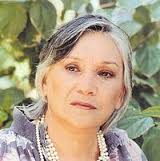
Since the 1970s, Israeli singing has become highly diversified, especially due to the influence of Anglo-American rhythms. On center stage we find pop and rock songs, then “songs of the land of Israel,” including folk songs and the IDF ensembles. Then there are songs in Hebrew composed with Western popular rhythms such as disco and rap, as well as Eastern song.
In the second half of the 1960s, the accordion was gradually replaced by the electronic organ, the darbuka was replaced by drums and electric bass and guitars were added. This transformation stimulated the emergence of rock groups such as that formed by Arik Einstein, Shalom Chanokh and Shmulik Kraus, influenced by the Beatles; and above all Lehakat Kaveret, “the hive,” which even today is still the most influential group in this style of music.
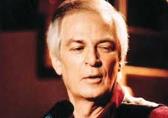
While Alexandre (Sasha) Argov and Moshe Vilensky are the main composers since 1948, a new generation appeared with Nurit Hirsh and Matti Caspi, who also became successful singers, along with Aryeh Levanon, Yair Rosenblum, Yohanan Zarai and Dov Seltzer, as well as singer-songwriters Shalom Chanokh, Yehudit Ravitz, and Shlomo Gronikh. The talent of new singers, such as Arik Einstein and Chava Alberstein encouraged new and original creations. Many duos (Ran and Nama, Ilka and Aviva, Hadudaim, Haparvarim), trios (Sheloshet Hameitarim, Gesher HaYarkon) and groups (Batzal Yarok, HaTarnegolim) enriched the song repertoire. The songs of poets were also characteristic of this period. Unlike the genres mentioned above, these musicians emphasized individual, urban experience, rather than collective or national themes.
Eastern Song
In the 1950s, songs inspired by the urban Iraqi and Egyptian rhythms began to emerge, and popular Greek songs sung in Hebrew became popular in the 1960s. These last two styles were seen as protest music, and were consequently scorned by the cultural establishment. Eastern Jewish influences became increasingly marked from the time of the Six Day War. At the same time as electric instruments were used, so too were the oud, or Eastern lute, the qanun, or cithara, and the darbuka. Notable among the Eastern composers are Avihu Medina, Boaz Sharabi and Shlomo Bar. This type of song, which was especially popular among the working class, enjoyed great success. Called Muzika Mizrachit, (Eastern music) it includes a mix of styles and Greek, Turkish, Arab and Yemenite instruments combined with popular Western musical forms.
Klezmer and Hassidic Music
The term klezmer comes from the Hebrew kley-zemer, which means: “song instruments.” In fact, this name was given as early as the fifteenth century to Jewish musicians who travelled around Central and Eastern Europe to play at celebrations, while remaining marginal figures within Jewish communities. Today the klezmorim are considered creative artists and eminent cultural spokespersons. Contrary to the liturgy that is transmitted orally and in a closed circuit, klezmer music has borrowed widely from indigenous Russian, Romanian, Polish, Ukrainian, Lithuanian, Hungarian, Greek and Ottoman popular music. In this sense, it is possible to truly speak of musical fusion. Since the 1970s, there has been a veritable renaissance in klezmer music. Starting in the United States, “new wave” klezmer soon came to Europe and Israel. Klezmer is composed by musicians from many different contexts, for instance Giora Feidman who was clarinetist at the Philharmonic Orchestra of Israel for twenty years before launching into his career as a klezmer soloist.
Hassidic music takes Biblical verses and ritual prayers and arranges them in simple repeating minor harmonic progressions with a regular rhythm. Immediately after the Six Day War, a new style of Hassidic song emerged, led by Rabbi Shlomo Carlebach, “the singing Rabbi.” Since 1969 annual Hassidic music festivals have been held and more recently, this stylistic movement has become even stronger. The incessant and monotonous rhythm, with songs composed of a single verse repeated throughout have now been superseded: contemporary Hassidic singers do not hesitate to use the rhythms of reggae, rock’n’roll and jazz, and they also no longer borrow their texts directly from the Bible or Talmud. The songs, which are often linked to contemporary events, God’s love for his children, the importance of joy in divine service, are all written by the singers themselves, who include, Aharon Razel, Adi Ran, Chaim David Serchuk, Sinai Tor and Yehuda Glantz.
Arab Music in Israel
Since the beginning, and well before the creation of the state of Israel, Arab music has played a primary role both in the religious and secular ceremonies of daily life. There is a vast repertoire of folk songs, sung by the Bedouin farmers and peasants and in which men and women are separated. Daily events are chanted through a vast repertoire of songs and dances. Two poets who are both musicians and singers, who may or may not be from the village, alternate in the recital. The tunes are generally improvised, building upon the ataba, the popular Middle Eastern four line stanza, or else on the huwar, an argumentative dialogue in sung verses. Most ceremonies are held outdoors and the audience participates actively by singing, clapping and dancing the debka [9]. This is usually accompanied by the urghul or mijwiz, local instruments resembling clarinets.
Urban music has also existed since the Ottoman period, but has changed considerably. Before 1948, Ibrahim Bathish created a music club in Haifa that contributed extensively to the development of classical Arab music, and one of his graduated students, Selim Chilu, became an eminent composer of the prestigious vocal style, the muwashshah [10] . After the creation of the state, three young composers, Sudki Shukri, Michael Dermalkonian and Hikmet Shahine, continued to promote Arab music in the North of the country. In place of oral transmission, a teaching program was set up at the music conservatory in Haifa. In 1963, Suheil Radwan, one of the first graduates, became director of the music department at the University of Haifa. This department was responsible for a musical renaissance in schools, and community and cultural centers. Most music groups that emerged then were also composed of Jews from Near and Middle Eastern Arab communities. A virtually fraternal cooperation was established between Arab and Jewish musicians and the creation of the Beit Ha-gefen Arab and Jewish music center in Haifa became the symbol of this cooperation. In 1957 Israeli radio founded the first Arab music professional orchestral ensemble with Ezra Aharon, a composer and famous oud player from Iraq, as director. In the 1970s, Arab singers participated in annual festivals organized by various radio stations. More recently, small Arab-Jewish ensembles organized musical encounters which combined Arab, Jewish and Western music styles. The most famous of these ensembles was Bustan, whose members use the qanun, the guitar, the banjo, the oud, the violin, the flute, bass guitar and Arab percussion. The group thus acquired an international reputation for combining an eclectic mixture of musical influences.
The many different influences that can be identified in all Israeli music, from Jewish and Arab to classical and folk, religious and secular, are a reflection of the plural origins of the country’s population, the daily impact of Jewish and Arab musical traditions and the omnipresence of Western music. Out of this constant interaction of Israeli musicians and the music of other cultures comes a veritable musical medley. In this way Israeli music constantly affirms one of its fundamental characteristics: an attempted symbiosis between East and West within an active quest for new and renewed sources.
- Michèle Tauber – Paris – March 2007
“I would like to thank, in particular, composer and teacher Oded Zehavi, whose warm welcome and helpful advice enabled me to complete this work.”
BIBLIOGRAPHY
Avni (Tzvi), « Music in the Eighties-Onwards or Backwards ? », Music in Time, 1988-89, pp. 34-38.
Böhm (Yohanan), « Music in Modern Erez Israel, Composers », Encyclopædia Judaica, 2nde édition, 1971.
Delmaire (Jean-Marie), « La chanson israélienne : origines », YOD, P.O.F., 1978, vol. 4/2, pp. 75-93.
Delmaire (Jean-Marie), « La chanson israélienne de 1948 à 1978 », YOD, P.O.F., 1979, vol. 5/1, pp. 92-112.
Fleischer (Robert), Twenty Israeli Composers, Detroit, Wayne University Press, 1997.
Hirschberg (Jeoash), « Music in the Jewish Community of Palestine, 1880-1948 : A Social History », New York, Oxford University Press, 1995.
Keren (Tzvi), Contemporary Israeli Music : Its Sources and Stylistic Development, Ramat Gan, Bar Ilan University Press, 1980.
Sadie (Stanley) et Tyrrell John (éditeurs), New Grove Dictionary of Music and Musicians, Londres, 2005.
Shiloah (Amnon), « Revival and Renewal : Can Jewish Ethnic Tradition Survive the Melting Pot ? », Musica Judaica 10, n° 1, 1987-1988, pp. 59-69.
